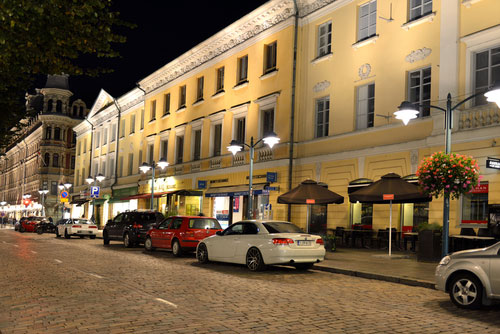4
Helsinki’s smart street lights will find you a parking place
· Posted by admin in LED, Philips LED
THE CITY of Helsinki has installed internet-connected street lights which find motorists a parking place.
The pilot deployment uses miniature Internet-Protocol video cameras mounted on the luminaires to monitor the spaces. These cameras generate data which is interpreted by cloud-based image analytics to assess if the parking space is available. This real-time parking occupancy information can then be pushed to city authorities and motorists. Additionally, this data can be shared with third-party app developers.

A micro camera from Super Circuits similar to the ones deployed in the Helsinki smart parking experiment. The increasing miniaturisation of video cameras means they can easily be incorporated in both outdoor and indoor lighting. Manufacturers say that as prices fall, they could replace passive infra-devices so that, for instance, instead of knowing if a meeting room is occupied, as a PIR can detect, a video camera could be used to determine exactly how many people are present.
It’s also part of a wider programme in which the Public Works Department of the City of Helsinki is considering using public lighting as a potential backbone for Internet of Things services.
Parking is considered a potential killer app for so-called smart cities. Studies in San Francisco have shown that 30 per cent of the traffic congestion in cities is caused by drivers spending time searching for a parking spot, so reducing this time can lower air pollution and traffic noise. Additionally, knowing the location and quantity of parking spaces can help cities cut down on illegal parking and develop a dynamic pricing structure based on use and occupancy data.
Continuous tracking of parking spaces also helps identify parking bottlenecks and offers a means to enable traffic guidance. In the future, outdoor luminaires could provide light indications, making it easy to identify open parking places on city streets.
Philips says the initiative has provided Helsinki with first-hand information about the suitability of video technology for smart parking and helped the city gain valuable insights into how this type of monitoring can be deployed. The company estimates that lighting-based parking management can reduce average parking search time by 40 per cent, reduces average traffic in terms of miles per day by 30 per cent and improve safety by reducing parking spot searches.
The lighting industry sees huge potential in street lighting becoming the digital backbone of smart cities. Trials are currently being conducted into the use of public luminaires to deliver Wi-Fi as well as monitor the use of firearms and the levels of snow.
See LED street lighting at Novel Energy Lighting
dynamic smart parking · Helsinki · led street lights · Novel Energy Lighting · philips lighting · smart cities · smart street lights


